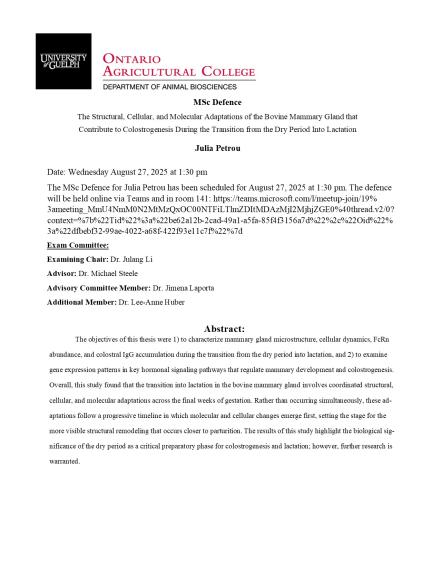The defence will be held online via Teams and in room 141: https://teams.microsoft.com/l/meetup-join/19%3ameeting_MmU4NmM0N2MtMzQxOC00NTFiLTlmZDItMDAzMjI2MjhjZGE0%40thread.v2/0?context=%7b%22Tid%22%3a%22be62a12b-2cad-49a1-a5fa-85f4f3156a7d%22%2c%22Oid%22%3a%22dfbebf32-99ae-4022-a68f-422f93e11c7f%22%7d

The Structural, Cellular, and Molecular Adaptations of the Bovine Mammary Gland that Contribute to Colostrogenesis During the Transition from the Dry Period Into Lactation
The objectives of this thesis were 1) to characterize mammary gland microstructure, cellular dynamics, FcRn abundance, and colostral IgG accumulation during the transition from the dry period into lactation, and 2) to examine gene expression patterns in key hormonal signaling pathways that regulate mammary development and colostrogenesis. Overall, this study found that the transition into lactation in the bovine mammary gland involves coordinated structural, cellular, and molecular adaptations across the final weeks of gestation. Rather than occurring simultaneously, these ad-aptations follow a progressive timeline in which molecular and cellular changes emerge first, setting the stage for the more visible structural remodeling that occurs closer to parturition. The results of this study highlight the biological sig-nificance of the dry period as a critical preparatory phase for colostrogenesis and lactation; however, further research is warranted.
